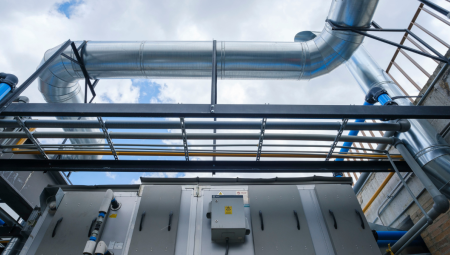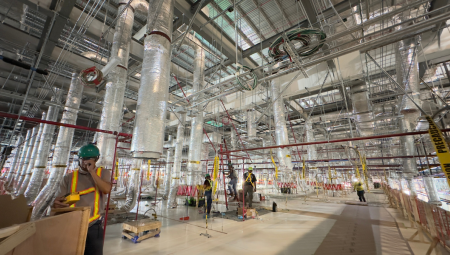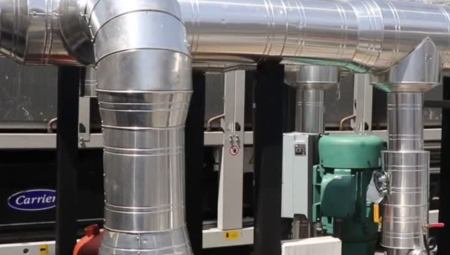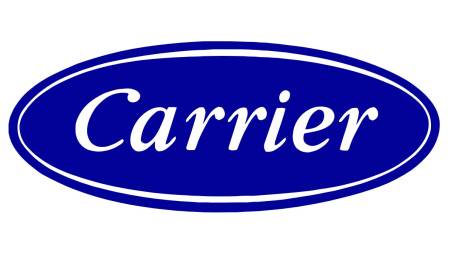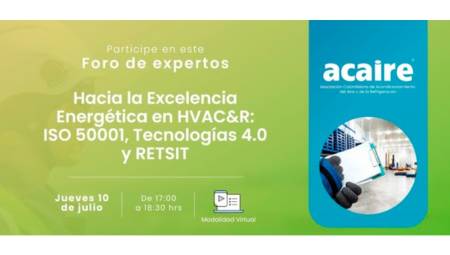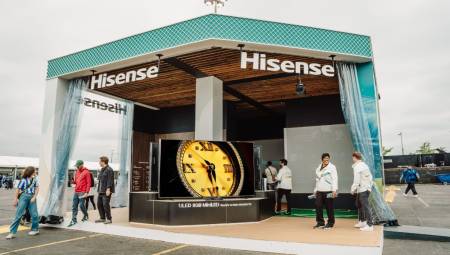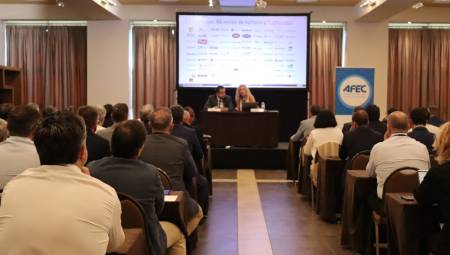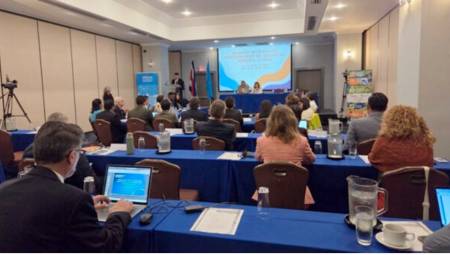By: Alfredo Sotolongo*
Over the years, engineers designing ventilation systems have tried to maintain indoor air quality by extracting the polluted air and replacing it with outside air, because it was understood that this was the best solution to dilute pollutants. However, in most of our tropical countries the outside air is hot and humid and also, in many cases, it is more polluted than the indoor air that is extracted; therefore, the industry has been forced to look for more efficient alternatives.
In most countries in the region, the conditions of the outside air are of such magnitude that when introduced to the handler, approximately five tons per 1,000 CFM are added to the thermal load and in addition, the air used for ventilation is contaminated as a result of the concentration of exhausts from combustion engines. Internal n of vehicles and industrial plants. This situation has motivated institutions such as ASHRAE to develop standards that not only contribute to regulating quality, but also to minimizing energy consumption. The purpose of ASHRAE 62 is to specify the least possible ventilation so that the level is acceptable to humans occupying the conditioned area, with the intention of minimizing any potential negative effect on their health.
Indoor air quality is presented according to many parameters including:
a) The state of the outside air.
b) The design of the conditioned areas, including the distribution of air.
c) The operation and maintenance of the system.
(d) The presence and magnitude of the concentration of contaminants.
ASHRAE 62 specifies procedures to obtain the desired levels such as:
a) Proportion procedure: This method prescribes the reason why outside air should be introduced into the conditioned area and is based on the type of use given to that area. The application tables specified by ASHRAE are expressed in the minimum amount of outdoor air that must be applied per person in a given area. Sometimes it can be up to 100%; in other words, the amount of outside air could be equal to the total amount supplied by the air conditioning system, which is a huge unnecessary waste of energy.
b) Quality procedure: Indoor air quality is achieved in the conditioned environment by controlling known contaminants that can be identified by processing the air through filtration systems. This system offers an alternative to the proportioning procedure, which minimizes the amount of outside air by controlling pollutants until certain acceptable levels of concentration are achieved. The acceptable reduced amount is also subject to the type of use given to the conditioned area.
The importance of good filtering
The quality procedure is an alternative that presents a combination of filtration systems and introduction of a smaller amount of outside air into the environment, reducing the thermal load. This makes it possible to use smaller air conditioners that require a lower initial investment, which contributes to improving the environment and minimizing the cost of operating the system. The efficiency of the filtration process determines the amount and times that the air must be recirculated through it, in addition to performing the filtration both solid and gaseous particles must be controlled.
By enabling ASHRAE alternative procedures, manufacturers have invested years of research into the development of filters that have managed to control contaminants regardless of particle size, and products capable of absorbing gaseous elements to control odors have also been developed. However, to handle smaller solid particles, very high efficiency filters are required, which considerably increase the pressure drop of the system forcing the use of higher power motors, which increases energy consumption.
Understanding the problem: In a sample of atmospheric air with a volume of one cubic foot, it was found that particle sizes are distributed according to the table below, indicating that particles smaller than 0.5 microns represent the largest percentage of all particles present.
Size in Quantity of Percent of Percent of
microns particles particles volume/mass
10-30 1,000 0.005% 28%
5-10 35,000 0.175% 52%
3- 5 50,000 0.25% 11%
1-3 214,000 1.07% 5%
0.5-1 1,352,000 6.78% 2%
0-0.5 18,280,000 91.92% 1%
20 million particles were found in a cubic foot of air, of which more than 18 million have a size of 0.5 micron or smaller, constituting 92% of the sample, yet they represent only 1% of the total mass. The problem that arises is that many of the particles of this size, due to their mass, cannot be displaced by the air extraction system or trapped by the filters, and are only governed by the electrostatic charges generated by carpets, computer screens, fluorescent lights, etc., which when acquiring electrostatic charges adhere to the curtains, ceiling, furniture and also to the body of people who are exposed to the conditioned environment.
Therefore, when designing the filtration system, the manufacturer must take into consideration the following:
1) Trap particles smaller than 0.5 micron without creating additional pressure drops to the air conditioning system.
2) Trap gaseous particles without saturating the filter medium, avoiding the high replacement cost.
3) Avoid generating ozone gas during the process, since it has a great oxidizing power.
4) Minimize maintenance.
5) Use low pressure drop and low cost filters.
6) That the filtration process consumes the least amount of electrical energy possible.
One of the most interesting and effective filtration systems was developed by CRS Industries, Inc., in 1962. The CosaTron® system is based on Brownian motion, named after the Scottish botanist Robert Brown, which refers to the natural motion of particles suspended in gases or liquids. This system increases the movement of particles that, as a result of their low mass, cannot be controlled by the flow of air or trapped by filters, so that they trip over each other and agglomerate both in the environment and in the path of the air through the distribution system. Once the particles, whether solid or gaseous, have agglomerated, so that they form larger mass bodies, they are then dragged by the air stream and trapped by the medium or low efficiency filter.
As a result of the high cost of fuels and therefore electricity, the implementation of filtration systems is widely justified, which maintain indoor air quality in compliance with the ASHRAE 62 standard and at the same time save energy, since the initial investment is recovered in most cases in a very short time. I recommend that engineers who design air conditioners analyze different filtration systems that comply with ASHRAE standards and select the one that, based on energy savings, generates recovery of the initial investment in three years or less.
Alfredo Sotolongo, president of Protec, INC., is certified as a professional engineer in Puerto Rico and the State of Florida; he has more than 40 years of experience in the application and sale of systems and equipment for energy conservation. He is a member of ASME (American Society of Mechanical Engineers), AEE (Association of Energy Engineers), by which he is certified as an energy management engineer, and ASHRAE, of which he was president of the Miami chapter. In addition, he has presented numerous talks on the topic of energy conservation.


